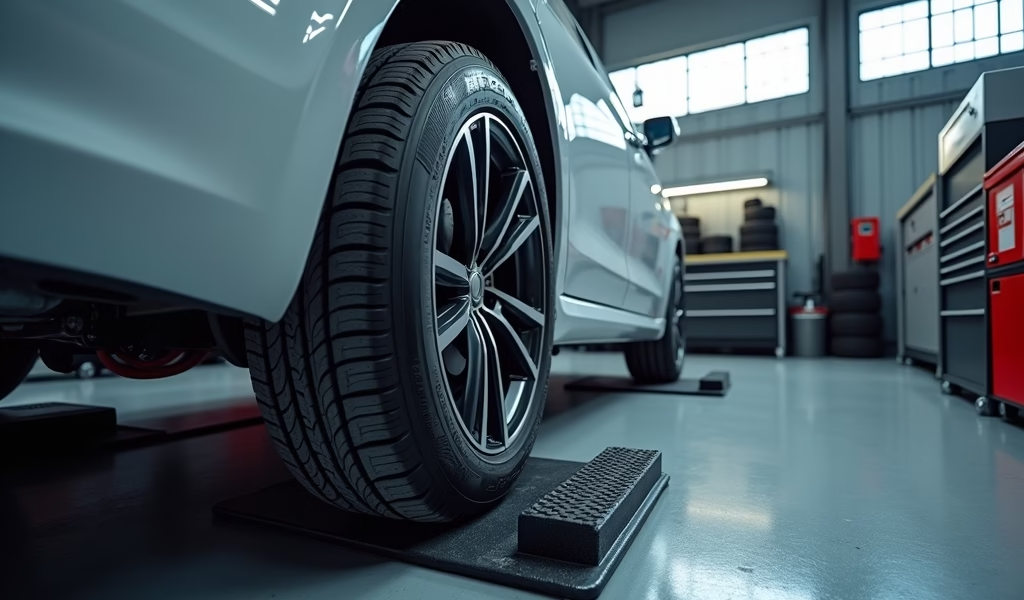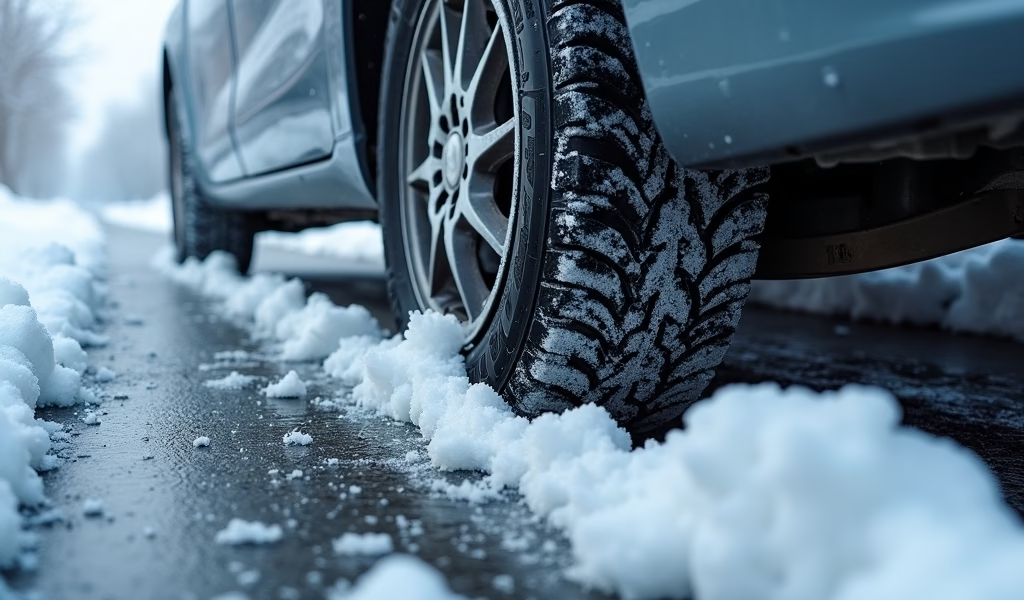Overview
This article provides five essential snow tire maintenance tips: regularly monitor tread depth, maintain proper tire pressure, rotate tires strategically, store tires properly during off-seasons, and inspect for damage and aging. Proper snow tire maintenance not only extends tire life (up to 3-4 seasons) but significantly improves winter driving safety by ensuring optimal traction and handling in snow and ice conditions.
Table of Contents
- Introduction
- Why Snow Tire Maintenance Matters
- Tip 1: Monitor Tread Depth Regularly
- Tip 2: Maintain Proper Tire Pressure
- Tip 3: Rotate Your Snow Tires Strategically
- Tip 4: Proper Storage During Off-Seasons
- Tip 5: Inspect for Damage and Aging
- Conclusion
- Frequently Asked Questions
Introduction
Let’s face it—winter driving can feel like navigating an ice rink in dress shoes. Snow tires (or winter tires as they’re sometimes called) are your secret weapon against Mother Nature’s slippery shenanigans. But owning them isn’t enough; proper maintenance is what keeps you safely on the road when temperatures plummet and snowflakes start dancing.
As someone who’s spent 20 years under hood and chassis in the frostiest parts of the country, I’ve seen firsthand how well-maintained snow tires can be the difference between a confident winter commute and an unwanted rendezvous with a snowbank. The rubber compounds in quality winter tires are specifically engineered to stay flexible in freezing temperatures, while their unique tread patterns bite into snow and ice like tiny snow shovels.
But here’s the kicker—even the best snow tires can’t perform their winter magic without proper care. That’s why I’ve put together these five proven maintenance tips that will help extend the life of your snow tires and keep you safer on winter roads. Your wallet (and possibly your guardian angel) will thank you.
Why Snow Tire Maintenance Matters
Before diving into our maintenance tips, let’s talk about why this matters more than you might think. Snow tires aren’t just regular tires with a fancy winter name tag—they’re specialized equipment designed for specific conditions.
The average set of quality snow tires will set you back anywhere from $600 to $1,200 installed. That’s not pocket change, but it’s a worthwhile investment considering what’s at stake. Properly maintained snow tires can last 3-4 seasons, while neglected ones might barely make it through one harsh winter.
According to a study from Tire Rack, vehicles equipped with well-maintained winter tires stop up to 30-40% shorter on ice compared to all-season tires. That could be the difference between a close call and a costly collision.
But beyond the dollars and cents, there’s something you can’t put a price on—peace of mind. Knowing your snow tires are in peak condition means you can focus on enjoying those winter drives to the ski lodge instead of white-knuckling it the whole way.
When comparing winter tires vs. all-season options, the specialized nature of snow tires makes their maintenance even more critical. Their softer rubber compounds and deeper tread patterns require specific care to perform at their best when you need them most.

Tip 1: Monitor Tread Depth Regularly
If there’s one thing I can’t stress enough about snow tires, it’s this: tread depth is everything. While regular tires can squeak by with 4/32″ of tread, your snow tires need significantly more to effectively bite into snow and slush.
New snow tires typically come with about 10/32″ to 12/32″ of tread depth. Once they wear down to 6/32″, they’ve lost a significant portion of their winter performance capabilities. At 4/32″, you’re essentially driving on glorified all-season tires—not what you want when that surprise blizzard hits during your commute home.
Here’s how to check your snow tire tread depth like a pro:
- Use the classic penny test: Insert a penny with Lincoln’s head upside down into your tire’s tread groove. If you can see the top of Lincoln’s head, your tread is too worn for winter driving.
- Better yet, invest in an inexpensive tread depth gauge. They’re more accurate and will give you an exact measurement in 32nds of an inch.
- Check multiple spots across each tire—uneven wear patterns can create dangerous weak spots.
I had a customer a few years back who insisted his snow tires were “just fine” despite being five winters old. A quick check showed less than 3/32″ of tread remaining. Two weeks later, he called to thank me after purchasing new high-quality winter tires—he’d experienced the difference firsthand when navigating an unexpected ice storm.
Remember: deep tread isn’t just about gripping snow; it’s also crucial for slush evacuation. Those channels between tread blocks need sufficient depth to channel slush and water away from your contact patch. When they’re too shallow, you’re at risk for dangerous slush hydroplaning—a particularly scary form of losing control.
Pro tip: Take photos of your tire tread at the beginning and end of each winter season. This visual record helps you track wear patterns over time and plan for replacement before you’re caught in a dicey situation.
Tip 2: Maintain Proper Tire Pressure
Here’s a fun physics fact that could save your hide this winter: tire pressure drops about 1 PSI for every 10°F decrease in temperature. That means the perfectly inflated snow tires you installed in November could be seriously underinflated by January’s deep freeze.
Underinflated snow tires are a triple threat: they wear faster, reduce fuel economy, and—most dangerously—compromise handling and braking performance exactly when you need them most. On the flip side, overinflated tires reduce your contact patch with the road, giving you less grip on already slippery surfaces.
The pressure recommendation for snow tires is typically the same as what’s listed on your vehicle’s door jamb sticker, but there are exceptions. Some manufacturers recommend slightly lower pressure for snow tires to increase the contact patch—check your tire documentation or manufacturer’s website to be sure.
Develop this simple routine for winter tire pressure maintenance:
- Check pressure at least twice monthly during winter (more often during rapid temperature fluctuations)
- Always check when tires are cold—meaning the car hasn’t been driven for at least 3 hours
- Don’t forget the spare if your vehicle carries one
- Consider keeping a quality pressure gauge in your glove compartment—gas station gauges are notoriously inaccurate
I once worked with a family that experienced terrible handling with their new snow tires. When they brought the vehicle in, all four tires were at 18 PSI—nearly 15 PSI below specification! They’d been filled properly at installation, but two months of cold weather and a slow leak had created a dangerous situation. After proper inflation, they were amazed at the transformation in performance.
According to NHTSA data, properly inflated tires can improve fuel efficiency by up to 3%, saving you money while also improving safety. That’s what I call a win-win situation.
Remember that even the best tire pressure monitoring systems (TPMS) typically only alert you when pressure is dangerously low—usually 25% below recommendation. Don’t rely on your dashboard warning light as your only pressure check.
Tip 3: Rotate Your Snow Tires Strategically
Snow tires wear differently than your regular tires, primarily because winter driving conditions create unique stress patterns. Strategic rotation isn’t just about extending tire life—it’s about maintaining balanced handling when road conditions are at their worst.
If you’re like most drivers, you probably mount your snow tires at the beginning of winter and remove them in spring. This seasonal schedule creates the perfect opportunity for rotation—both when installing and when removing for storage.
The ideal rotation pattern depends on your vehicle’s drivetrain:
- For front-wheel drive (most common): Rotate front tires to the rear and cross the rear tires to the opposite sides at the front
- For rear-wheel drive: Rotate rear tires to the front and cross the front tires to the opposite sides at the rear
- For all-wheel drive: Cross-rotation pattern where each tire moves diagonally to the opposite position
One rotation strategy I recommend to my clients with dedicated winter wheels (tire and rim sets) is the “half rotation.” Since winter tires typically see less mileage than all-seasons, you can sometimes get away with rotating them every other season. Mark each tire/wheel position when removing them, then install them in rotated positions next winter.
Even with minimal winter driving, I strongly recommend at least one rotation per winter season. The reason? Winter driving creates more variable conditions that can lead to uneven wear—from occasional deep snow to mostly cleared highways.
I worked with one client who drove about 20,000 miles yearly but only about 4,000 of those were winter miles. By implementing a strategic rotation plan, his snow tires lasted an impressive seven seasons without compromising safety. That’s extreme, but it shows what proper maintenance can achieve.
When rotating, take the opportunity to thoroughly inspect each tire for damage or abnormal wear patterns. These can be early warning signs of alignment issues or other problems that should be addressed before they compromise your winter driving safety.

Tip 4: Proper Storage During Off-Seasons
When spring flowers start blooming, your snow tires need a proper summer vacation. How and where you store them directly impacts their longevity and next-season performance. I’ve seen perfectly good sets of winter tires ruined by improper storage, and let me tell you—that’s a painful way to waste $800.
The enemies of stored tires are sunlight, heat, ozone, and improper positioning. Here’s how to protect your investment during the off-season:
- Clean thoroughly before storage: Remove road grime, salt, and brake dust using soap and water. Let them dry completely.
- Avoid direct sunlight: UV rays break down rubber compounds and accelerate aging.
- Keep away from heat sources: Store in cool, dry locations away from furnaces, water heaters, or dryer vents.
- Maintain proper positioning: Store either standing upright or stacked horizontally—never hanging!
- Consider tire bags: Special tire storage bags help protect against environmental damage and keep garage areas cleaner.
If you’re storing mounted tires (tire and wheel assemblies), stack them horizontally or stand them upright. For unmounted tires, standing them upright is best—stacking unmounted tires can create flat spots and distortion over time.
Here’s a storage mistake I see constantly: people tossing their winter tires in the corner of a garage that reaches 100+ degrees in summer. Heat accelerates the aging process of rubber compounds. A much better choice is a basement or climate-controlled area where temperatures stay moderate year-round.
I had one customer who stored his expensive snow tires in his shed next to some harsh household chemicals. The tire sidewalls actually developed cracks from the chemical vapors before ever seeing another snowflake! The ideal storage location is cool, dry, clean, and free from chemicals or petroleum products.
If space is tight, consider tire storage services offered by many tire shops and dealers. For $50-80 per season, they’ll store your set properly and often include free mounting and balancing when it’s time to reinstall. Given the extended life this provides your tires, it can be money well spent.
Tip 5: Inspect for Damage and Aging
Even with perfect maintenance, snow tires don’t last forever. Rubber compounds deteriorate over time through a process called oxidation, and physical damage from winter road hazards can compromise performance long before tread is fully worn.
Develop the habit of inspecting your snow tires at key moments: when installing, when removing for storage, and at least once mid-season. Look for these warning signs that indicate potential problems:
- Sidewall cracks or cuts (even small ones can indicate structural issues)
- Bulges or blisters on any tire surface
- Uneven wear patterns that could indicate alignment or suspension problems
- Punctures or embedded objects, even if the tire isn’t losing air
- Excessive age—most manufacturers recommend replacing winter tires after 6 years regardless of tread depth
Check the manufacture date on your tires by looking for the DOT code on the sidewall. The last four digits indicate the week and year of manufacture (e.g., “3619” means the 36th week of 2019). This is crucial for snow tires, as their specialized compounds can deteriorate more quickly than standard tires.
I had a customer bring in a set of snow tires with excellent tread remaining, but the sidewalls told a different story—tiny cracks had formed throughout, and the manufacture date showed they were nine years old. The rubber had hardened with age, seriously compromising cold-weather flexibility. Despite the good tread depth, these tires would have performed poorly in winter conditions.
Pay special attention to damage from winter-specific hazards. Road salt can accelerate corrosion on wheels and sometimes damage rubber compounds. Hidden potholes under snow can cause impact damage that may not be immediately visible but can create internal tire problems.
If your snow tires have been on the same wheels for multiple seasons, have the bead areas inspected for corrosion that could cause slow leaks or unsafe mounting conditions. This is particularly important in regions where road salt is heavily used.
Conclusion
Your snow tires are one of the most important safety investments you’ll make for winter driving. With these five maintenance tips—monitoring tread depth, maintaining proper pressure, strategic rotation, proper off-season storage, and regular inspections—you’ll maximize both their lifespan and their performance when you need it most.
Remember that snow tires represent the single most effective upgrade you can make for winter driving safety. Even the most advanced all-wheel drive system can’t compensate for worn or poorly maintained winter tires when it comes to stopping distance and cornering grip on snow and ice.
By implementing these maintenance practices, you’re not just protecting your financial investment—you’re protecting yourself and your passengers during winter’s most challenging driving conditions. The few minutes spent on proper tire care could save you hours of stress, thousands in repair costs, or even prevent injuries from winter accidents.
Stay safe out there this winter, and give those snow tires the attention they deserve. Your future self, navigating confidently through that surprise blizzard, will thank you!
Frequently Asked Questions
How long do snow tires typically last?
With proper maintenance, snow tires typically last 3-4 winter seasons or about 30,000 miles. The rubber compounds deteriorate with age, so replace them after 6 years regardless of tread depth.
Can I use snow tires year-round?
No, snow tires should not be used year-round. Their softer rubber compounds wear extremely quickly in warm temperatures and their winter-focused tread patterns provide poor performance in dry summer conditions.
Do I need snow tires on all four wheels?
Yes, always install snow tires on all four wheels. Using snow tires on only the drive wheels creates dangerous handling imbalances that can cause spinouts or loss of control.
When should I install my snow tires?
Install snow tires when temperatures consistently fall below 45°F (7°C). This usually means October-November in most northern regions, but varies by location and annual weather patterns.
Are studded snow tires better than studless ones?
Studded tires provide superior traction on ice but perform worse than modern studless tires on all other surfaces. Most drivers are better served by high-quality studless winter tires unless they regularly drive on ice-covered roads.

